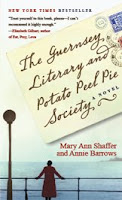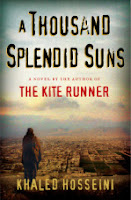 I can’t believe I am sharing this link with you. It decreases my chances of winning this contest and I really want to win!
I can’t believe I am sharing this link with you. It decreases my chances of winning this contest and I really want to win!
The story in a nutshell is this: In January of 1946, British columnist Juliet Ashton receives a letter from a stranger, a founding member of the Guernsey Literary and Potato Peel Pie Society. An unlikely and amazingly deep friendship begins between Juliet and the members of this “book club” and the reader is transported to the island of Guernsey during the German occupation, and into the hearts of people who risk much for love.
Here is an excerpt from an interview with one of the authors, Annie Burrows: “I have received many, many letters from readers all over the world bemoaning the fact that the book comes to an end. ‘I wanted it to go on forever,’ they say. ‘I want to go to Guernsey and join a book club.’ ‘I want to be a member of the Guernsey Literary and Potato Peel Pie Society.’ And the answer is Yes. As long as we don’t get too caught up in the space-time continuum, the book does still go on, every time a reader talks about it with another reader. The membership of the Guernsey Literary and Potato Peel Pie Society increases each time the book is read and enjoyed. The wonderful thing about books–and the thing that made them such a refuge for the islanders during the Occupation–is that they take you out of your time and place and transport you, not just into the world of the story, but into the world of your fellow-readers, who have stories of their own.’
I love that concept. That just sharing this book with you makes me a card-carrying member of the Society. And I don’t have to eat any Potato Peel Pie to join (I hear it’s not that great!)
Want to read an excerpt? Sure you do. Here you go.
I don’t usually win contests, but this book left me so full of hope, I am optimistically packing my bags. Anyone want to come with me?








